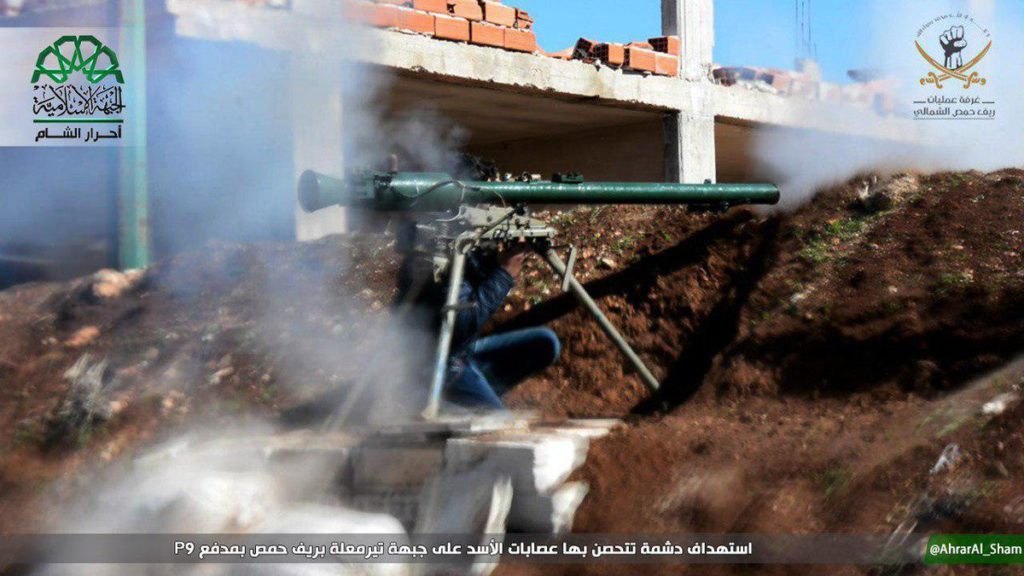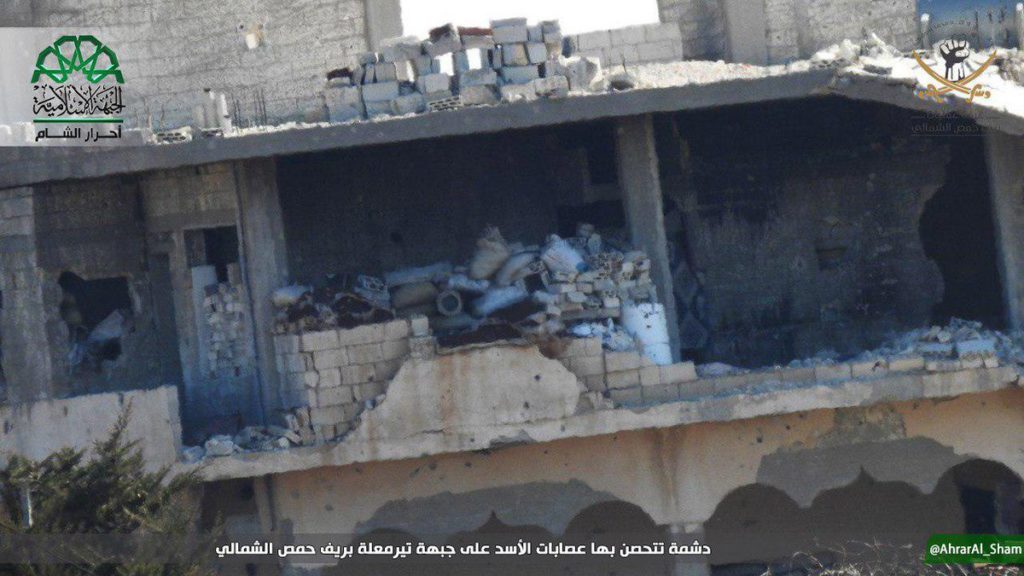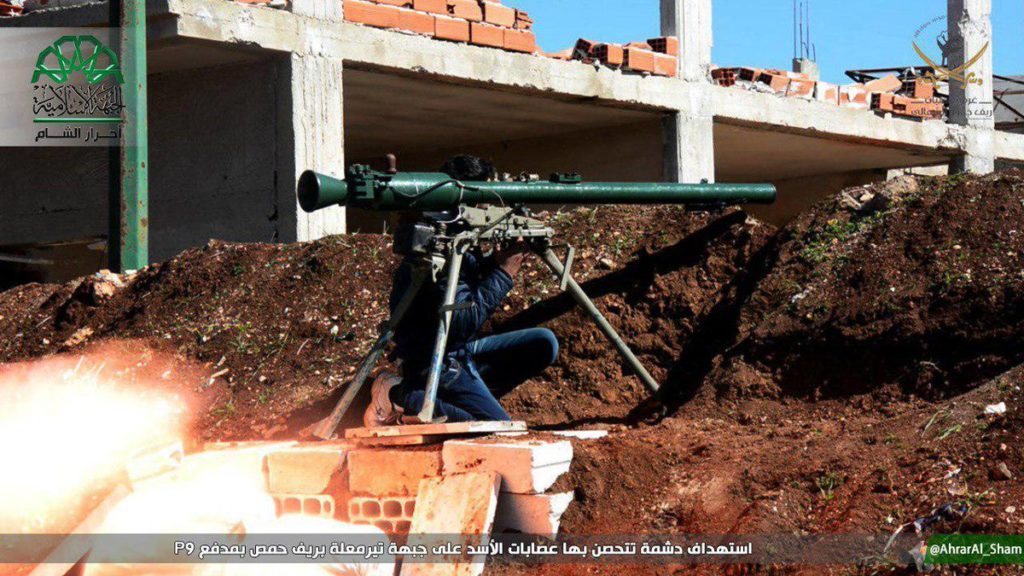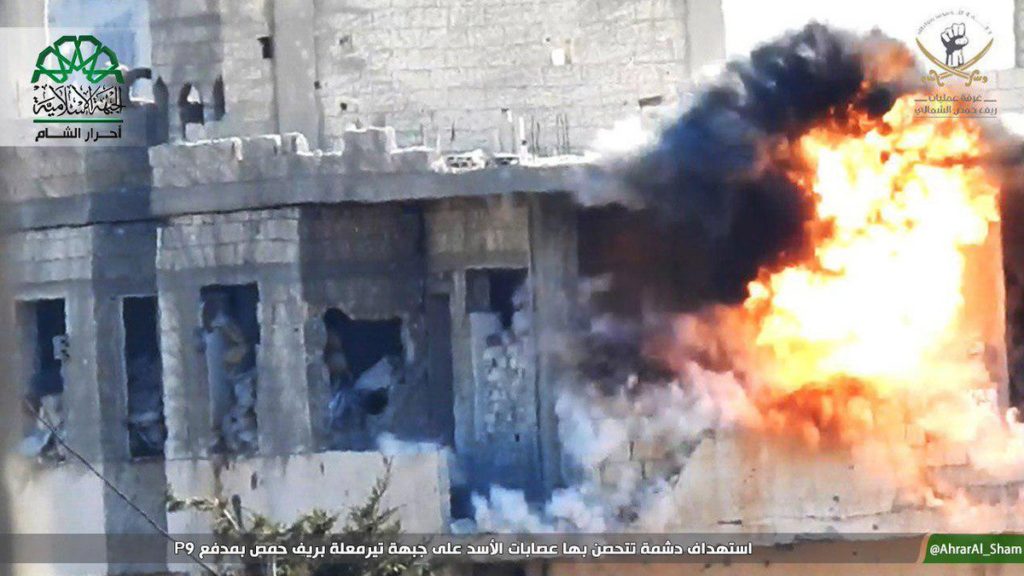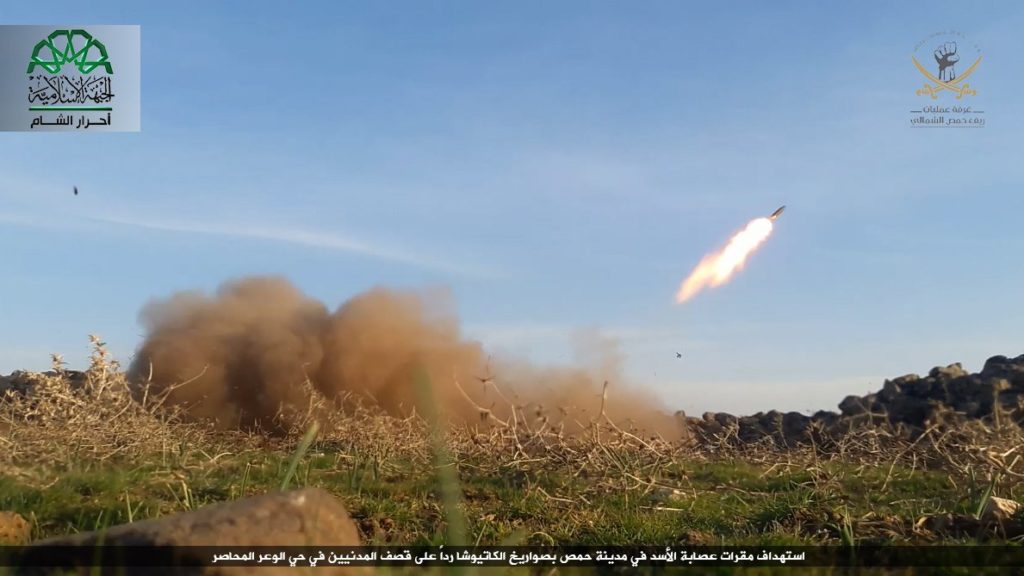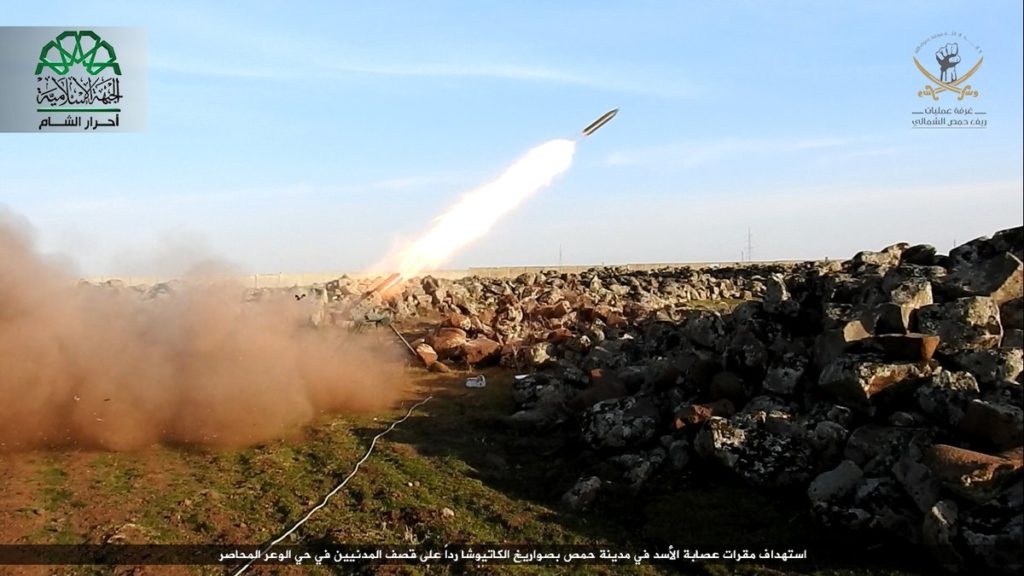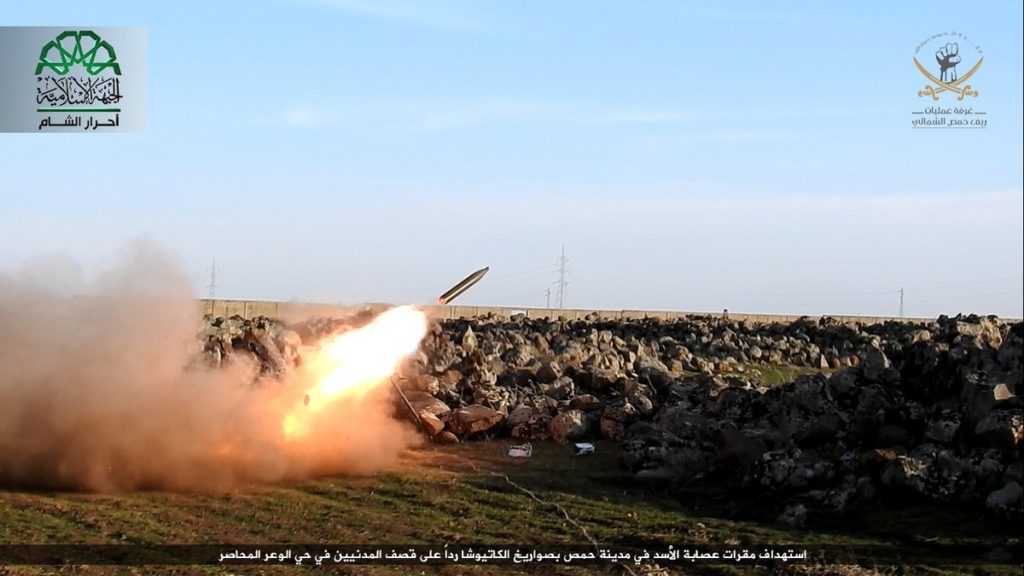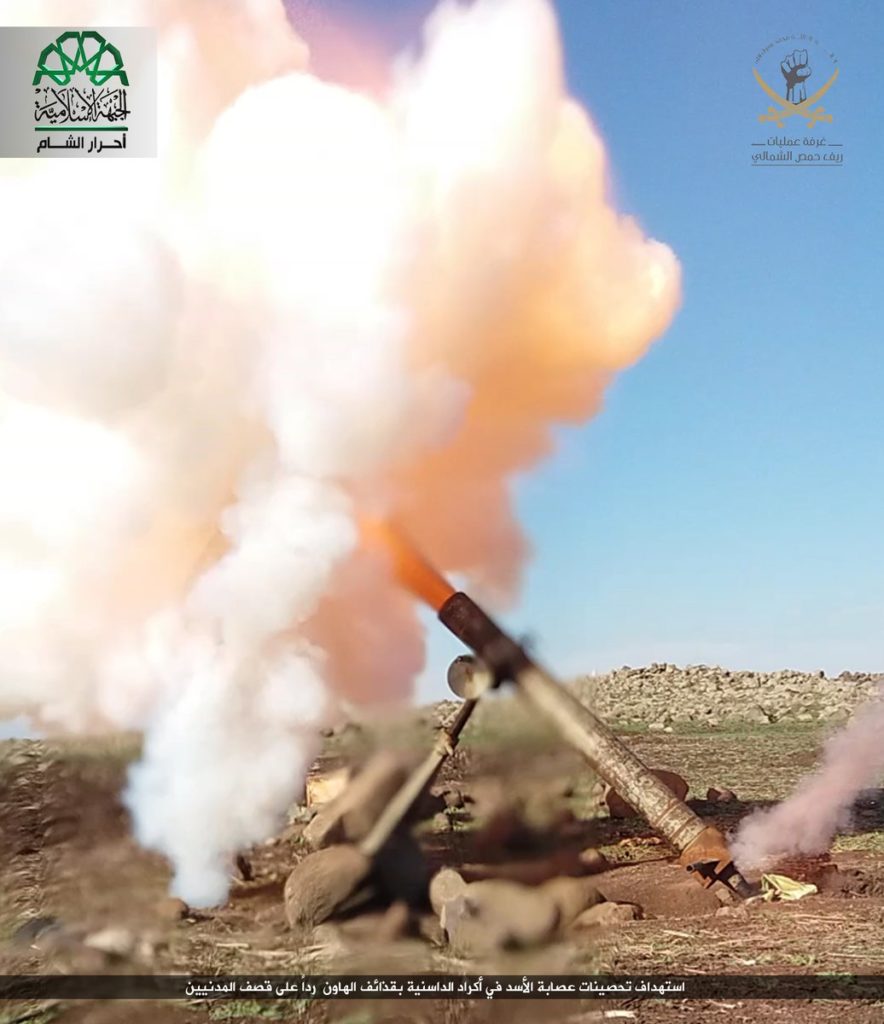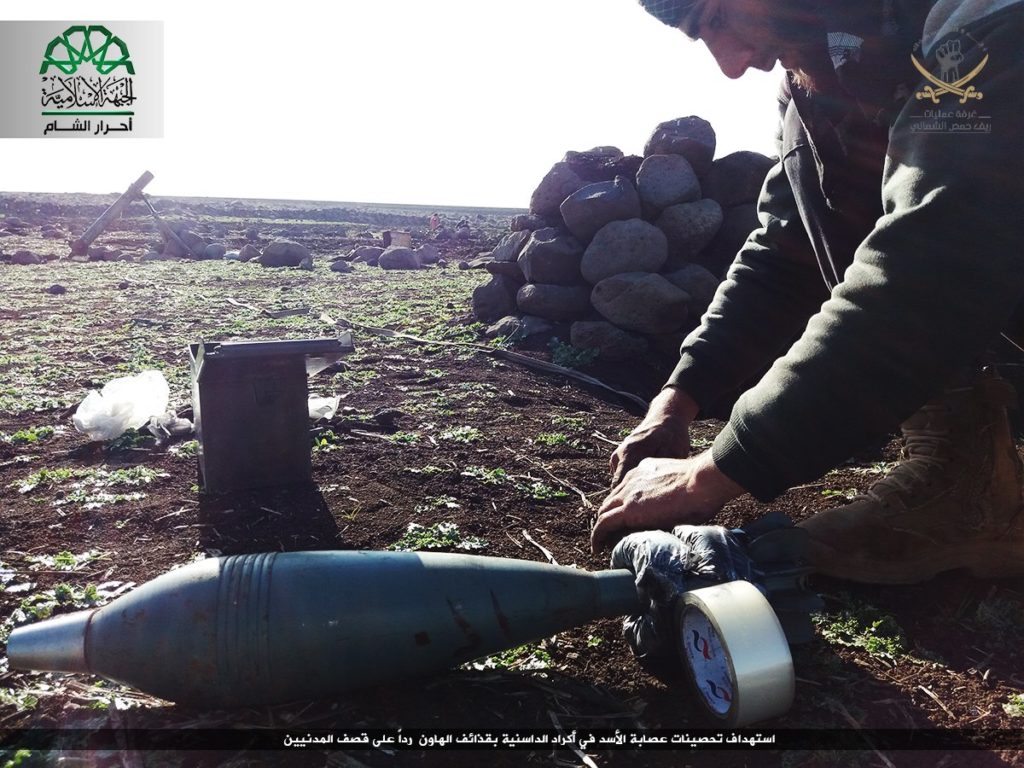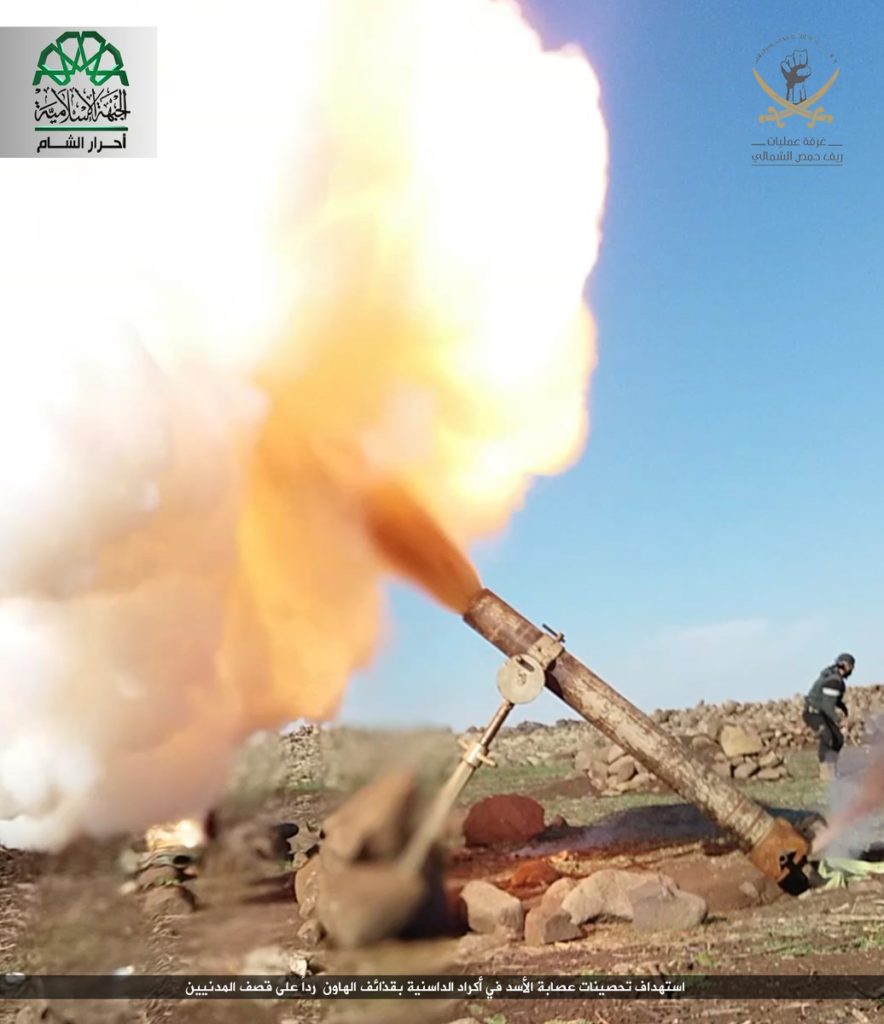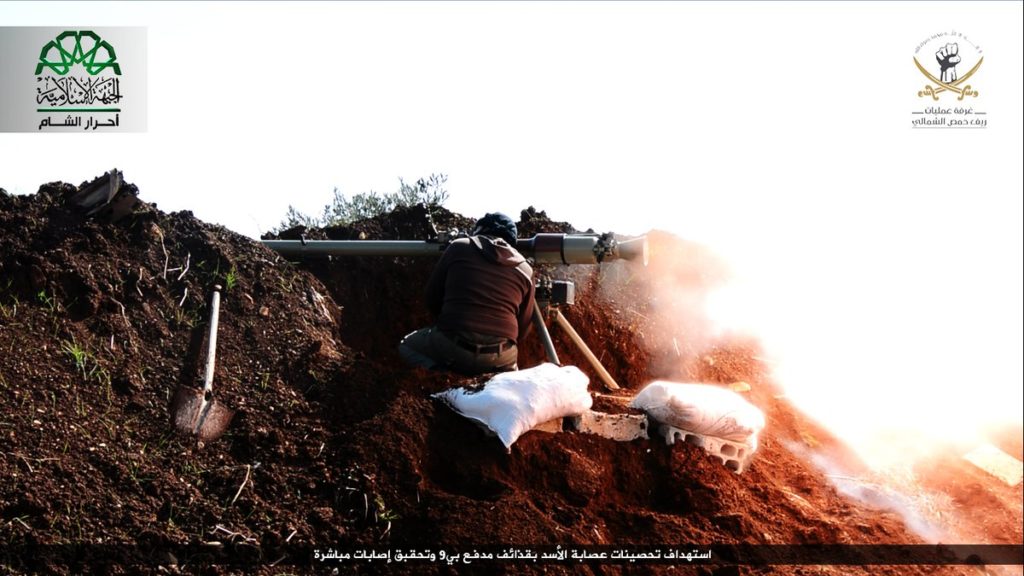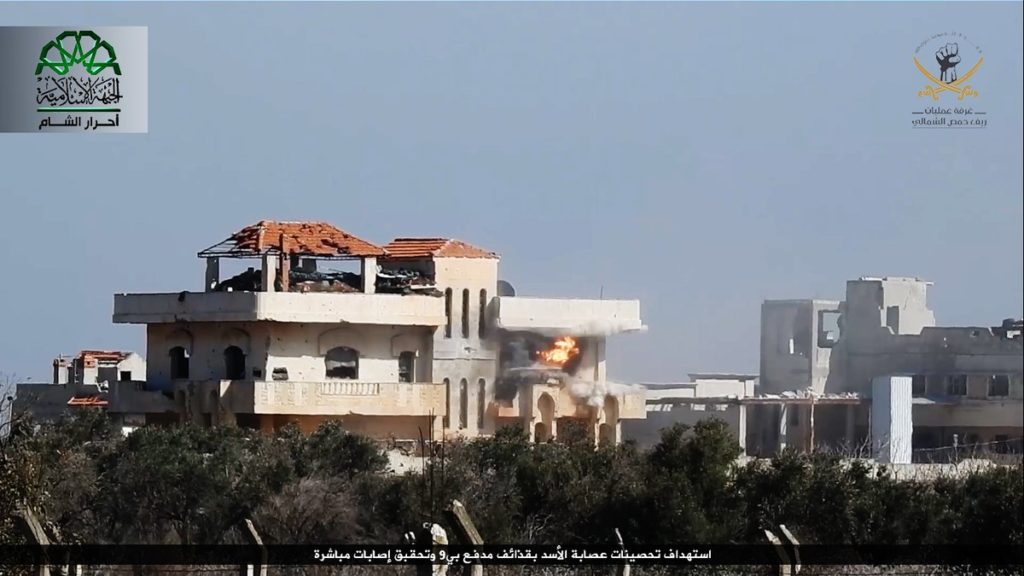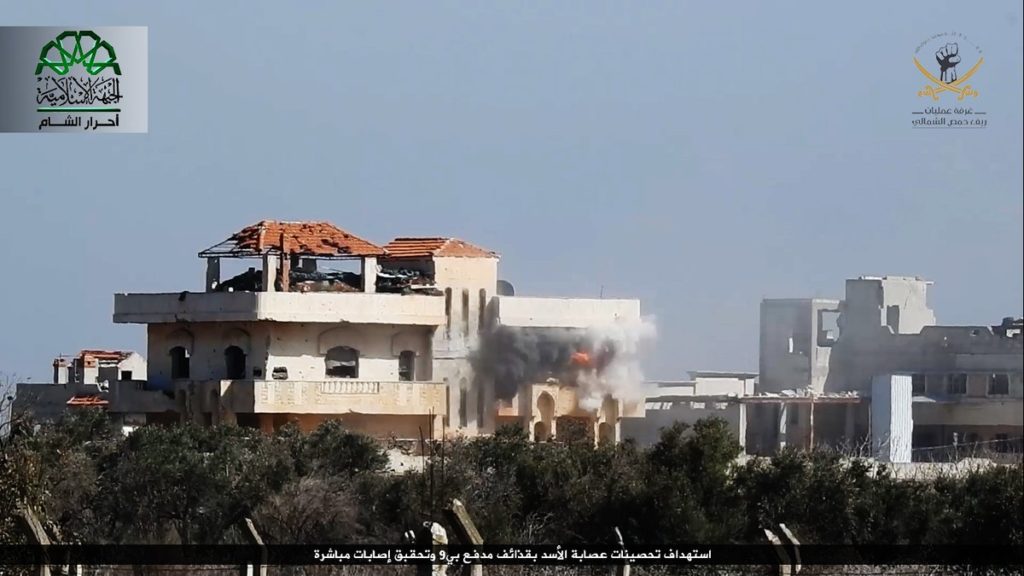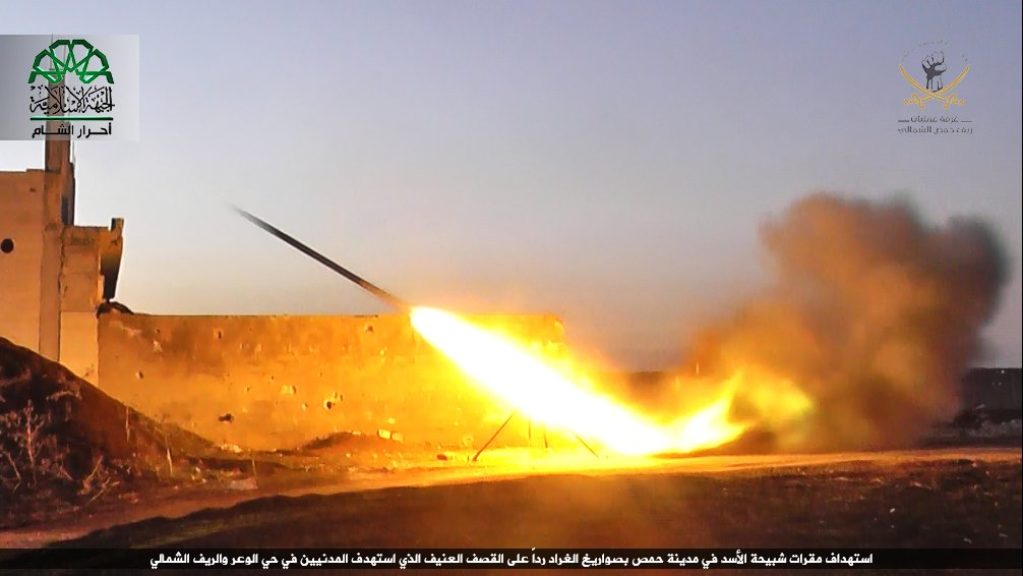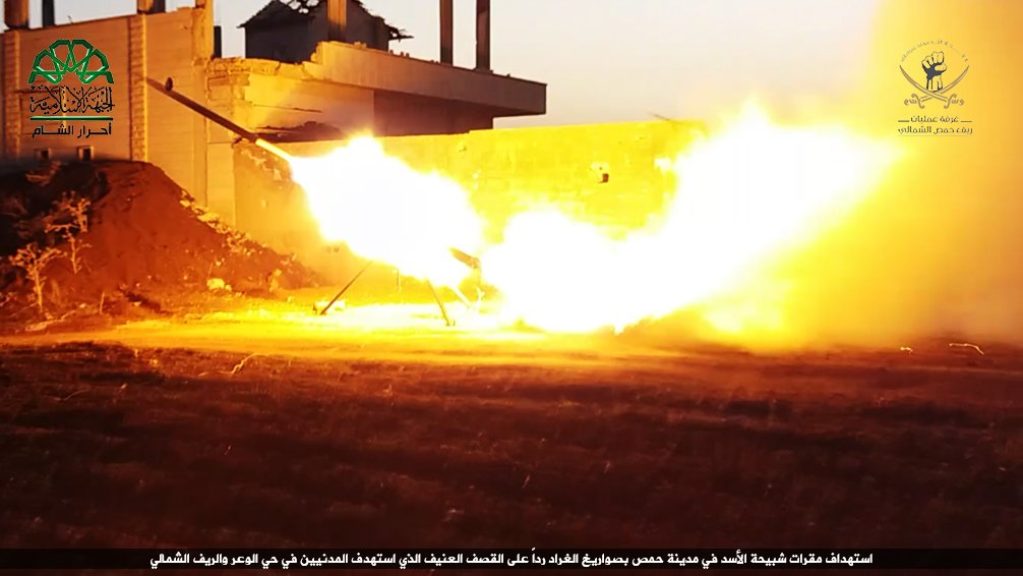A senior military intelligence official who was reportedly close to Syrian president Bashar al Assad was killed during a complex suicide assault in the city of Homs earlier today. The official, General Hassan Daabul, died after a suicide bomber penetrated security and made his way into Daabul’s office, according to a witness cited by Al Jazeera.
Hay’at Tahrir al Sham (HTS), a newly formed group that includes al Qaeda’s Syrian branch, quickly claimed responsibility for the operation. HTS reported on its Telegram channel that “five inghimasi fighters” were responsible for the raid.
The inghimasi are well-trained guerrilla fighters who are prepared to die in battle. They are different from traditional suicide bombers in that they don’t detonate their explosive belts at the outset of the fight, but instead first battle their enemies with light arms or other weapons. This is exactly what happened in Homs, as the HTS “inghimasi” engaged in a prolonged gunfight before infiltrating Syrian regime positions and then detonating their explosives.
As FDD’s Long War Journal has reported in the past, both al Qaeda and the Islamic State use inghimasi fighters in their operations.
According to HTS, more than 40 people were killed and 50 more wounded in the assault. Independent press reports are generally consistent with HTS’ claims, as they indicate there were dozens of casualties.
Sheikh Abdullah al Muhaysini, a US-designated terrorist and a senior ideologue in HTS, was quick to praise the operation on his Arabic and English-language Telegram channels. In one post, Muhaysini repeated HTS’ claim regarding casualties, saying that General Hassan Daabul and “a number of [other] big officers” were killed. “All thanks is to Allah,” Muhaysini added.
Muhaysini claimed that “the Chief of the National Security branch,” Ibrahim Darwish, was also killed “due to the inghimasi operation.” Citing regime-controlled television stations, the Associated Press (AP) confirmed that Darwish had been “critically wounded.”
In still another post, Muhaysini’s Telegram channel boasted: “The killing and wounding of tens due to the detonating of explosive devices in the checkpoints of the criminal Regime while they were treating the wounded from the Military Security and National Security branches. All thanks is to Allah.”
The explosive devices were set near the security buildings targeted by HTS. The bombs were triggered after the jihadists’ initial assault, when Syrian regime forces rushed to the scene to assist the wounded. This is a common jihadist tactic and is intended to maximize casualties.
Both the AP and Reuters reported that Syrian opposition officials taking part in peace talks in Geneva were quick to blame the Assad regime itself for the attack.
The AP reported that Col. Faleh Hassoun, a member of the delegation participating in the talks, had “cast doubt on who was behind the attack, pointing out that only those with security clearance could access such an area.” According to Hassoun, “what really happened today we can call it liquidation by the regime of those who are wanted by international courts.” Hassaoun accused Daabul of being involved in the Feb. 14, 2005 assassination of former Lebanese Prime Minister Rafik Hariri. The United Nations has implicated the Assad regime, including Syrian military intelligence officials, in Hariri’s assassination.
“The area where this happened is very secure, which is always monitored,” Hassoun elaborated, according to Reuters. “And no security operation can happen there unless it is facilitated through other security forces who have security access and the infiltration in those areas.”
But Hassoun’s accusations do not square with the claims issued by HTS, which has taken credit for the operation.
Sheikh Muhaysini, the senior HTS cleric, said the group “cures your [the Syrian peoples’] seething and avenges your Martyrs” with the assault.
“Youth who sold their souls to Allah entered the Military Security branch,” Muhaysini wrote. “The first of them launched himself like an arrow after the criminal Major-General ‘Hassan Daabul’ and tore him apart so he can continue his punishment in the fire of Jahannam [Hell].” Muhaysini continued: “The second one launched himself at the Dean ‘Ibrahim Darwish’ so he can follow his crony.” And then the “rest of the inghimasis…separated at the offices of the branch to kill those who remained from the mercenaries of Assad.” Regime forces “hurried to treat” the “dozens” who were wounded, “but the mines” in their “path…finished off those who remained.”
Operations room in northern countryside of Homs
Much of the city of Homs, which has been devastated by the Syrian war, is controlled by the Assad regime. According to the Syrian Observatory for Human Rights (SOHR), the “final rebel-held neighborhood, al-Waer,” was heavily bombed by regime warplanes after the HTS raid.
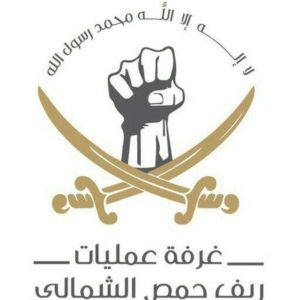
The jihadists have continued to fight forces loyal to the Assad regime elsewhere in Homs province. Along with its allies, Al Nusrah Front (al Qaeda’s arm in Syria) formed an operations room in the northern countryside of the province. The logo for this joint venture can be seen on the right.
Al Nusrah Front was rebranded as Jabhat Fath al Sham (JFS) in July 2016. JFS subsequently merged with several other groups to form Hay’at Tahrir al Sham (HTS) in January. Both JFS and then HTS continued to participate in the operations room in the northern Homs countryside in the months since Al Nusrah’s relaunch. Some of the photos below show HTS fighting in Homs earlier this month. The logo for the operations room can be seen in the upper right hand corner, while the watermark for HTS can be seen in the upper left hand corner.
Other organizations, including Ahrar al Sham, have continued to participate in the operations room as well. Ahrar al Sham is an Islamist organization that has its own links to al Qaeda. A powerful Ahrar al Sham faction defected and joined HTS in January. The leader of HTS, a jihadi known as Abu Jaber (Hashem al Sheikh), was formerly the head of Ahrar al Sham. Other factions in Ahrar al Sham have stayed in the organization. They have even battled some of the jihadists who formed HTS. Thus, their continued cooperation in Homs is significant.
The photos below show HTS participating in the operations room in northern Homs earlier this month. The three images were posted on social media on Feb. 22 and purportedly show HTS targeting regime-controlled checkpoints along the Salamiyah-Homs highway.
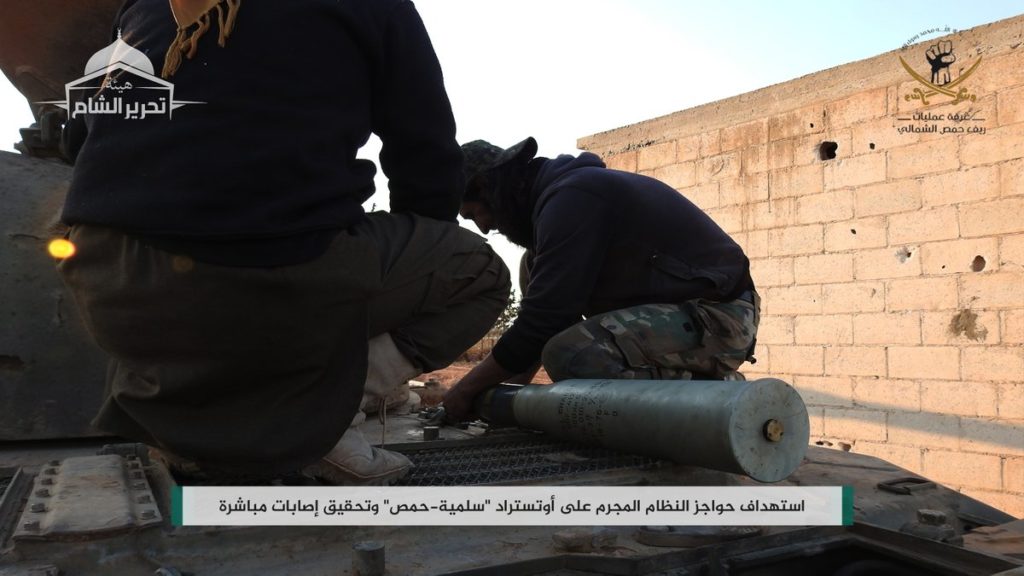
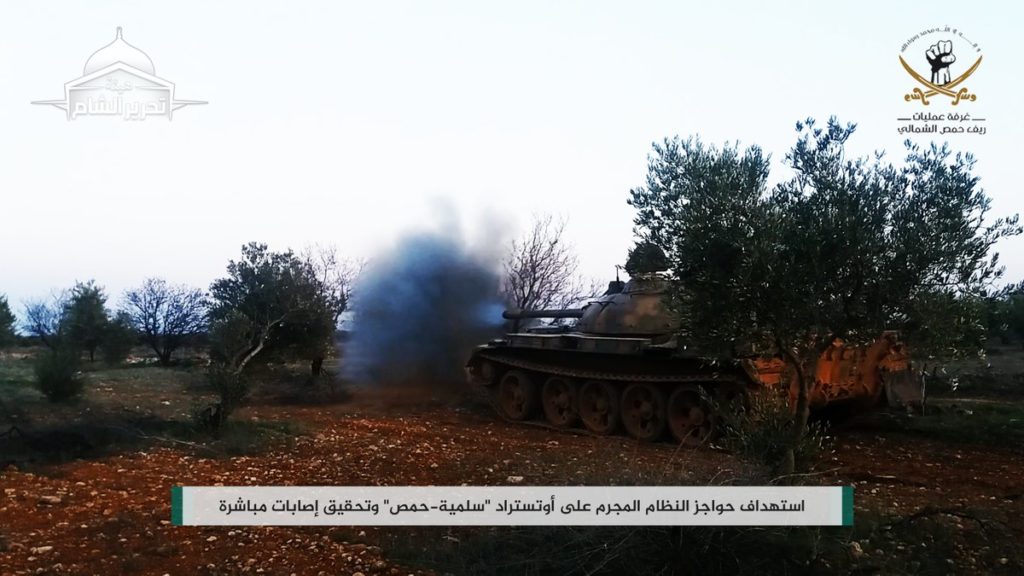
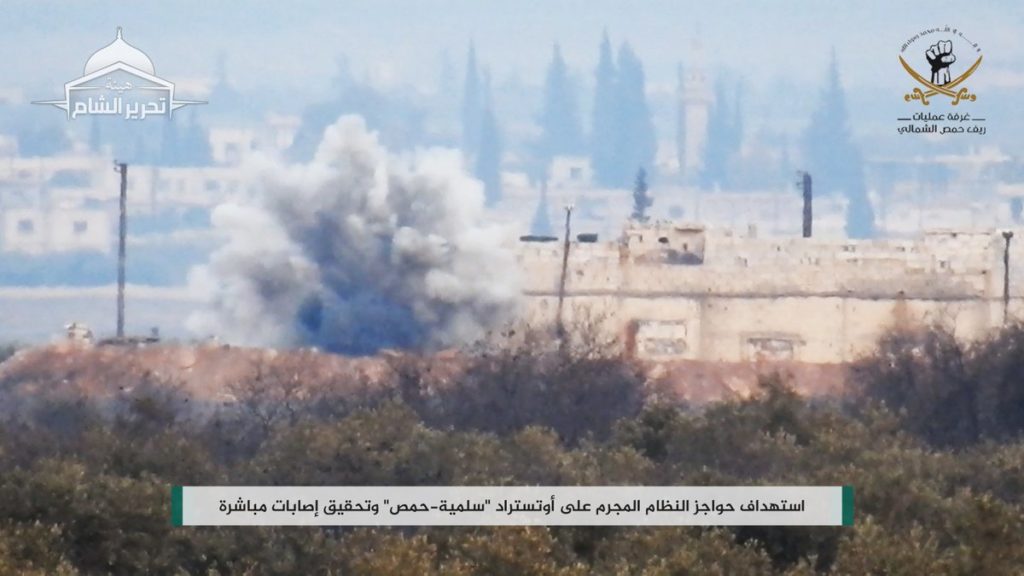
The photos below show Ahrar al Sham participating in the operations room in northern Homs and were posted on social media between Feb. 18 and Feb. 25. Ahrar al Sham’s logo can be seen in the upper left hand corner, with the operation room’s logo in the upper right hand corner. Ahrar al Sham claims that some of its rocket and mortar launches were in response to the Assad regime’s bombings in civilian areas.
